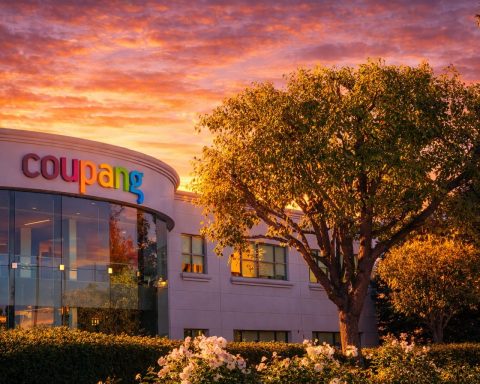Biotech & Pharma Industry Updates
- AbbVie Bets on Psychedelics: Pharma giant AbbVie struck a deal to acquire Gilgamesh Pharmaceuticals’ experimental depression drug (called bretisilocin) for up to $1.2 billion [1] [2]. The compound is a psychedelic-derived therapy (5-HT2A agonist) aiming to treat major depressive disorder with a shorter “trip” but sustained benefits. Analysts noted this pushes big pharma into the burgeoning psychedelic mental health field (a potential $50B market) that many large companies had shied from due to regulatory concerns [3] [4]. “Large Pharma has been less active exploring psychedelic compounds… making today’s deal more significant,” commented BMO analyst Evan Seigerman [5]. AbbVie plans to advance the drug into Phase 3 after positive mid-stage results, hoping to fill gaps as its cash-cow Humira faces generic competition [6] [7].
- Medtech Mega-Merger: Japan’s Terumo Corporation announced a $1.5 billion acquisition of OrganOx, an Oxford University spinout specializing in organ preservation devices for transplants [8]. The deal – one of the largest UK medtech buyouts ever – gives Terumo cutting-edge machine perfusion technology to keep donor livers viable longer, marking the company’s strategic entry into the organ transplant field [9]. OrganOx will become a wholly owned Terumo subsidiary, and the move is expected to boost organ utilization rates and could improve transplant outcomes by extending how long organs remain transplantable.
- Biotech IPO Freeze Thaws: After a six-month drought in biotech public offerings, LB Pharma is testing the waters with an IPO filing [10] [11]. The New York-based biotech, which is developing a Phase III–ready schizophrenia treatment (LB-102), filed for a standard ~$100 million IPO on Friday. It’s the first biotech IPO in half a year, as market volatility and poor post-IPO stock performance had shut the window for most of 2025 [12]. Proceeds will fund LB-102’s Phase III trial (aimed at supporting FDA approval) and additional studies in bipolar depression [13]. Analysts note that many biotechs have been surviving via private financings and deals during the IPO drought [14], so industry watchers will be eyeing if LB Pharma’s debut re-opens the capital markets for others.
- Funding Surge for Startups: Venture financing remains active. Arnatar Therapeutics emerged from stealth with a $52 million Series A to develop a novel RNA therapy for Alagille syndrome, a rare genetic liver disease [15] [16]. Uniquely, Arnatar’s lead candidate ART4 is an antisense oligonucleotide designed to boost production of the JAG1 protein (most RNA drugs silence targets) [17] [18]. The FDA has granted it orphan and rare pediatric disease status as it heads toward the clinic. And in Australia, Vaxxas raised A$90 million (~$58 million USD) to scale up its needle-free vaccine patch technology for painless, fridge-stable vaccine delivery [19]. The Series D funding will help Vaxxas build manufacturing capacity for its high-density microarray patches, which have shown promise in early trials as an alternative to needle injections.
Regulatory & Drug Approvals
- New Rare Disease Therapy Approved: The FDA gave a green light to Ionis Pharmaceuticals’ Dawnzera (donidalorsen), the first RNA-based prophylactic treatment for hereditary angioedema (HAE) [20] [21]. In Phase III trials, monthly under-the-skin injections of Dawnzera cut HAE attack rates by ~81% compared to placebo [22]. The drug targets the kallikrein pathway to prevent the sudden swelling attacks that afflict HAE patients. However, its steep list price – $57,462 per dose – has raised questions about access [23] [24]. “There is a lot of excitement for donidalorsen as patients who are not doing well on existing therapies have an option to switch to Dawnzera, which has a higher efficacy,” noted TD Cowen analyst Yaron Werber [25]. With an estimated U.S. patient population of ~7,000, Ionis forecasts the drug could surpass $500 million in annual sales at peak [26].
- FDA Rejects Ataxia Drug: In a surprise setback, the FDA issued a Complete Response Letter denying approval of PTC Therapeutics’ oral drug vatiquinone for Friedreich’s ataxia, a rare neurodegenerative disease [27] [28]. Regulators said the submitted trial did not provide substantial evidence of efficacy and demanded an additional study before reconsideration [29] [30]. “We are of course disappointed by the FDA’s decision to not approve vatiquinone,” PTC CEO Matthew Klein said, insisting their data show the drug can be safe and effective for children and adults with the disorder [31]. The rejection wasn’t entirely unexpected – analysts and investors had low expectations going in, and PTC’s stock actually rose 8% afterward as attention shifted to other products [32] [33]. For now, Biogen’s Skyclarys remains the only approved therapy for Friedreich’s ataxia [34].
- Green Lights and Delays: Regulators delivered a mix of progress and frustration for other treatments. Jazz Pharmaceuticals won FDA approval for dordaviprone, the first-ever treatment for a rare pediatric brain tumor (diffuse midline glioma). The drug emerged from Jazz’s $935 million takeover of Chimerix’s oncology portfolio [35], and its approval marks a milestone for children facing this lethal brain cancer. On the other end, families of patients with ultra-rare Barth syndrome are still in limbo: the FDA has delayed action on elamipretide, a mitochondrial therapy for Barth syndrome, due to manufacturing deficiencies. Stealth BioTherapeutics was forced to resubmit elamipretide’s application for the third time this week amid these setbacks [36]. Patient advocates, armed with a 10–6 advisory panel vote in favor from last year, are intensifying pressure on the FDA to finally approve the drug for the handful of boys affected by Barth syndrome [37].
- Safety Pullback – Chikungunya Vaccine Halted: In an alarming safety-driven move, the FDA suspended the U.S. license of Valneva’s chikungunya vaccine, Ixchiq [38]. Effective immediately, Valneva must stop distributing the shot after reports of 20+ serious adverse events, including 21 hospitalizations and 3 deaths, with one fatality directly linked to vaccine-induced encephalitis [39] [40]. Ixchiq had earned accelerated approval in 2023 for adults at risk of the mosquito-borne disease, but confirmatory trials have yet to prove a clinical benefit [41]. “Under most plausible scenarios, the vaccine does not provide benefits outweighing the risks…continued use would pose a danger to health,” the FDA’s biologics center concluded [42] [43]. Valneva’s shares tumbled ~22% on the news [44] [45]. The company halted U.S. sales and may withdraw the vaccine entirely, though it noted Ixchiq was only ~8% of its sales [46]. With Ixchiq sidelined, Bavarian Nordic’s rival vaccine (Vimkunya), approved in April, becomes the sole available chikungunya immunization in the U.S. [47].
Clinical Trials & Innovations
- Shingles Vaccine Rivalry: Small biotech Dynavax reported promising early results for its experimental shingles vaccine (Z-1018) that could challenge GSK’s blockbuster Shingrix [48]. In a Phase I/II trial of adults aged 50–69, two doses of Z-1018 induced antibody levels comparable to Shingrix, the current standard vaccine [49]. Notably, Z-1018 uses a novel adjuvant (immune booster) designed to cause fewer side effects. “That technical difference should drive…comparable immune responses and ultimately efficacy with a greatly improved tolerability profile,” explained Dynavax CEO Ryan Spencer [50]. If a larger Phase III confirms similar protection with milder reactions than Shingrix’s oft-complained-about flu-like side effects, Dynavax could have a formidable competitor in the >$2 billion/year shingles vaccine market.
- China’s Akeso Scores Twin Wins:Akeso Biopharma, part of a rising cohort of Chinese biotechs, announced two Phase 3 victories this week. Its antibody drug gumokimab (AK111) hit all endpoints in a 500-patient trial for ankylosing spondylitis, a painful inflammatory spine disease [51]. Patients on gumokimab showed significantly improved physical function and symptom scores versus placebo. Meanwhile, Akeso’s second late-stage trial showed its IL-4Rα inhibitor (AK120) provided notable skin lesion clearance and itch relief in moderate-to-severe atopic dermatitis (eczema) [52]. The eczema study’s success bolsters Akeso’s dermatology portfolio, and the company is already preparing to file for Chinese regulatory approval of gumokimab based on the strong Phase 3 results in both psoriasis (earlier trial) and now ankylosing spondylitis [53]. These wins underscore how China’s biotech sector is advancing high-quality biologics in immunology and could “reshape” global pharma as they seek approvals abroad.
- Cancer Immunotherapy Breakthrough: PDS Biotechnology unveiled remarkable final results from a Phase II trial of its HPV-targeted immunotherapy PDS0101 in advanced head and neck cancer. When combined with Merck’s Keytruda, PDS0101 extended median overall survival to 39.3 months in first-line metastatic HPV16-positive patients (with PD-L1 CPS ≥1) [54] [55]. For context, the typical median survival on standard care (Keytruda alone ± chemo) is only ~17.9 months in this setting [56] – meaning PDS’s combo more than doubled patient survival. “We believe this final readout…supports the durable clinical effect of PDS0101,” said Dr. Kirk Shepard, PDS’s Chief Medical Officer, adding the vaccine-like immunotherapy is simple to administer and “brings new hope” to patients with a growing, hard-to-treat cancer [57]. No PDS0101-treated patients dropped out due to side effects, an added plus [58]. Encouraged by the data, PDS has a Phase III trial underway (VERSATILE-003) and is positioning itself as a leader in HPV-positive head & neck cancers – a field of significant unmet need as these cancers rise in incidence [59].
- AI-Designed “Fountain of Youth” Proteins: In a striking biotech first, OpenAI revealed that an experimental GPT-4 model helped design new proteins that dramatically rejuvenate cells [60] [61]. In collaboration with Silicon Valley startup Retro Biosciences, the AI (GPT-4b micro) engineered enhanced variants of the famed Yamanaka factors – proteins that can revert adult cells into stem cells. Lab tests showed the AI-reengineered proteins boosted expression of stem cell markers by over 50× and repaired DNA damage faster than the originals [62]. Treated old cells effectively “behaved as if they were young again,” a major stride toward therapies that might delay or even reverse aspects of aging [63]. “We believe AI can meaningfully accelerate life science innovation,’’ OpenAI’s team wrote, calling the breakthrough proof that generative AI can act as a “co-creator” of biological advances in regenerative medicine [64] [65]. While still early-stage, the work hints at a future where AI accelerates discovery of anti-aging treatments far beyond what traditional R&D could. Researchers are now validating the AI-designed proteins in additional cell types and preparing for potential animal studies [66] [67].
Medical Research Highlights
- GLP-1 Drugs Linked to Lower Cancer Rates: Are diabetes and weight-loss drugs doubling as cancer fighters? A large new JAMA Oncology study suggests popular GLP-1 agonists (like Ozempic, Wegovy, Mounjaro) may modestly reduce the risk of certain cancers. Researchers analyzed 10 years of data on ~43,000 GLP-1 users vs. a matched non-user group [68]. They found overall cancer incidence was 17% lower in the GLP-1 group after adjusting for risk factors [69]. The protective effect was strongest for obesity-related cancers: GLP-1 use was associated with a 25% reduction in endometrial cancer, 47% lower ovarian cancer risk, and 31% lower meningioma (brain tumor) risk [70]. A slight uptick in thyroid and kidney cancers was observed but wasn’t statistically significant [71]. Being an observational study, it can’t prove causation – the benefit might stem from the weight loss these drugs induce rather than the molecules themselves [72]. Still, given over 137 million people in the U.S. could be eligible for GLP-1 therapy, even small shifts in cancer risk have “substantial public health implications,” the authors noted [73]. The findings come amid intense interest (and some controversy) in the systemic effects of GLP-1 drugs as their usage soars for metabolic diseases.
- No-Needle Infusions – A New Era: Scientists at Stanford unveiled a breakthrough that could turn hours-long IV infusions into quick injections. Reporting in Science Translational Medicine, the team developed a special polymer coating (named “MoNi”) that can encase protein drugs in microscopic beads, keeping them stable at extremely high concentrations [74] [75]. High doses of antibody therapies normally require slow intravenous drips because concentrated proteins tend to clump or degrade. But with the MoNi “candy shell” coating, proteins remain dry and potent until injection, when the coating dissolves. In lab tests, the researchers could double the concentration of antibody solutions and safely inject them under the skin [76]. “We ended up with something that looks like a candy-coated chocolate… our special polymer forms a solid, glassy coating on the outside,” said lead researcher Dr. Eric Appel [77] [78]. The technology worked for different biologics (including a COVID monoclonal antibody) delivered in seconds via standard syringe [79]. If it translates to the clinic, patients might one day self-inject treatments at home in seconds rather than spend hours hooked to IV drips – a potential game-changer for cancer, autoimmune, and metabolic therapies.
- “Edible Gel Beads” for Weight Loss: In a creative twist on fighting obesity, Chinese researchers have developed tiny ingestible beads – reminiscent of boba tea pearls – that helped rats shed weight [80] [81]. The plant-based microbeads are made of green tea polyphenols and vitamin E, coated in a seaweed-derived fiber. Swallowed with food, the beads swell in the gut and bind to fats, preventing fat absorption. In a high-fat diet study, rats that consumed the microbeads lost 17% of their body weight in one month, while control rats on the same diet gained weight [82] [83]. Treated rats also showed less liver fat buildup. The approach, published in ACS Nano, acts like a benign “gastric bypass in a pill” – creating a feeling of fullness and whisking away fat calories, without any actual drugs. While only demonstrated in rodents so far, the strategy could offer a drug-free weight loss aid in the future. The beads are designed to be passed out of the body naturally after trapping fats. Experts caution human trials are needed, but the concept adds a novel tool to the growing arsenal of obesity interventions.
Health Policy & Government
- Vaccine Policy Overhaul at HHS: A new and controversial figure now leads U.S. health policy – Health Secretary Robert F. Kennedy Jr., long known for vaccine-skeptic views. Since taking office, RFK Jr. has begun sweeping changes to federal vaccine programs [84], shaking up the public health establishment. Details are still emerging, but he has already replaced key immunization program staff and signaled a more “critical” review of vaccine schedules. His tenure has produced some startling moves: HHS this week authorized emergency use of an animal drug to combat a sudden livestock parasite outbreak, bypassing the usual approval process to protect the food supply [85]. And in a sharp break from prior policy, HHS cut federal funding for a California school-based health program supporting transgender youth, with RFK Jr. officials branding it “indoctrination” [86]. Each action underscores how politicized health policy has become in 2025, as decisions on vaccines and even youth health education now reflect ideological battles. Public health experts are alarmed, warning these shifts could erode hard-won gains in infectious disease control and health equity.
- Medicaid “Integrity” Crackdown: The Centers for Medicare & Medicaid Services (CMS), led by Administrator Dr. Mehmet Oz, launched a nationwide initiative to purge “ineligible” people from Medicaid rolls. New policies will require all 50 states to conduct monthly citizenship and immigration status checks on Medicaid and CHIP enrollees [87] [88]. CMS will feed states data reports identifying anyone whose status can’t be verified in federal databases, pressing states to swiftly terminate coverage for those individuals [89] [90]. “Every dollar misspent is a dollar taken away from an eligible, vulnerable individual in need of Medicaid,” Dr. Oz said, defending the effort [91]. “Medicaid is a lifeline for vulnerable Americans – and I will protect it from abuse,” added Secretary RFK Jr., urging strict enforcement [92]. Critics warn the hardline approach will inevitably sweep up eligible citizens who lack paperwork or fail bureaucratic checks, given that over 4 million Americans have already lost Medicaid this year as pandemic-era expansions unwind [93]. They note there’s scant evidence of significant numbers of undocumented immigrants on Medicaid [94] – traditional Medicaid already excludes them – suggesting the policy is more about politics than program savings. The crackdown nevertheless proceeds, with CMS framing it as ensuring resources only go to those who meet eligibility law.
- Global Health Diplomacy Roundup: Health policy is increasingly international. The World Health Organization reports that as of mid-2025, over 60 countries have adopted new pandemic accord guidelines aimed at faster outbreak reporting and equitable vaccine distribution (though major powers remain deadlocked over intellectual property waivers for pandemic tools) [95]. In the Middle East, Egypt celebrated reaching 80% domestic pharmaceutical self-sufficiency, inaugurating the Pharmaconex 2025 expo in Cairo as part of its push to locally produce medicines and reduce import dependence [96]. Climate and health are intersecting in policy: after this summer’s deadly heatwaves, the European Union is rolling out heatwave early-warning systems and investing in cooling centers, while in the Asia-Pacific, 21 nations convened a special summit on antimicrobial resistance [97]. The countries pledged tougher stewardship of antibiotics to combat superbugs. From pandemic pacts to pharma independence and climate resilience, these global initiatives will shape how healthcare is delivered and financed worldwide in coming years.
Public Health & Global Health Alerts
- Flesh-Eating Parasite Reaches U.S.: For the first time in decades, the dreaded New World screwworm has surfaced in a human in the United States. Health officials confirmed that a traveler who returned to Maryland from El Salvador was infested with screwworm fly larvae, which eat living flesh if not treated [98] [99]. The Cochliomyia fly had been eradicated from North America by the 1960s, but an outbreak in Central America has been creeping north. The Maryland case (identified earlier this month) set off alarms among veterinarians and ranchers – a wide outbreak in U.S. livestock could cost billions. “The risk to public health in the United States from this introduction is very low,” an HHS spokesman emphasized, noting no domestic animal cases have been found so far [100]. Still, the USDA isn’t taking chances: Agriculture Secretary Brooke Rollins traveled to Texas to launch a new sterile fly production program, aiming to release millions of sterile screwworm flies as a containment measure at the border [101]. Some cattle producers have criticized U.S. authorities for reacting too slowly, as screwworms are now just across the Rio Grande [102]. All eyes are on the border surveillance and sterile fly drops to prevent this flesh-eating parasite from gaining a foothold in American soil.
- Legionnaires’ Outbreak in NYC: New York City has been battling a deadly outbreak of Legionnaires’ disease in Harlem this summer – the city’s largest Legionella flare-up since 2015. At least 111 people have been sickened and 6 have died from the pneumonia-like illness centered in Manhattan’s Hamilton Heights area [103]. Health detectives traced the outbreak to contaminated cooling towers in 12 buildings, including one at a city-run hospital [104]. Legionnaires’ disease is caused by Legionella bacteria growing in warm water systems, and it spreads via aerosolized water droplets (it is not contagious person-to-person) [105]. All the implicated cooling towers have since been disinfected [106], and new cases have slowed (hospitalizations dropped to 7 patients this week, from a peak of 14) [107]. NYC health officials are still urging anyone in the affected neighborhoods to seek care quickly if they develop cough, fever or breathing trouble [108]. This outbreak, the worst in NYC in a decade, highlights the continued need for rigorous maintenance of building water systems – even years after regulations were tightened following the infamous 2015 Bronx outbreak [109].
- Measles Comeback in the Americas:Measles is resurging in the Western Hemisphere, decades after it was declared eliminated. The Pan American Health Organization (PAHO) reported 10,139 measles cases and 18 deaths across 10 countries so far this year, a 34-fold increase compared to the same period in 2024 [110]. The worst-hit country is Mexico, with 14 measles deaths, followed by the U.S. (3) and Canada (1) [111]. Most of Mexico’s fatalities occurred in unvaccinated indigenous communities [112]. PAHO officials pin the blame on gaps in routine vaccination – 71% of those infected had never received a measles shot [113]. “Measles is preventable with two doses of vaccine… To stop these outbreaks, countries must urgently strengthen routine immunization and conduct targeted campaigns in high-risk communities,” urged Dr. Daniel Salas, PAHO’s immunization chief [114]. The U.S. for example is scrambling to contain a large measles cluster in the Texas Panhandle (with 99 hospitalizations) [115]. Public health experts warn that pandemic disruptions, vaccine misinformation, and complacency have eroded measles immunity, allowing the virus to regain a foothold. Officials are racing to boost measles vaccine coverage before these outbreaks spread further and risk re-establishing endemic measles in the Americas.
- COVID & Virus Update: COVID-19 remains relatively quiet globally, but experts are watching a new Omicron subvariant nicknamed “Stratus” that is gaining traction. The CDC notes “Stratus” is causing a small uptick in COVID ER visits in 36 U.S. states [116], though cases remain far below past surges and no major spikes in hospitalizations have been seen. Updated fall COVID booster shots tailored to recent Omicron strains are expected by mid-September pending FDA and CDC signoff [117], and officials emphasize staying up to date on COVID and flu vaccines to head off a winter wave. Meanwhile, the mpox (monkeypox) virus continues to smolder: the WHO has kept mpox on its Public Health Emergency list since 2024 as outbreaks persist in parts of Africa and occasional clusters in Europe [118]. Vaccine maker Bavarian Nordic says demand for its mpox/smallpox shot is rising again amid these flare-ups [119]. And in respiratory news, Pfizer announced plans to begin Phase 3 trials of its RSV vaccine for older adults, entering a crowded race with GSK and Moderna in the RSV vaccine market [120]. An unusual summer surge of RSV in the American South this year has added urgency to developing more protection for seniors ahead of the winter season. Together, these updates serve as a reminder that even as the pandemic era fades, infectious threats old and new continue to evolve, keeping public health authorities on alert.
Sources: This report draws on recent press releases and expert commentary from Reuters, AP, and industry outlets (with citations) to provide an accurate and timely summary of developments. Readers are encouraged to consult the linked sources [121] [122] and official health agency updates for more detailed information.
References
1. www.reuters.com, 2. www.reuters.com, 3. www.reuters.com, 4. www.reuters.com, 5. www.reuters.com, 6. www.reuters.com, 7. www.reuters.com, 8. www.investorsinhealthcare.com, 9. www.investorsinhealthcare.com, 10. www.biospace.com, 11. www.biospace.com, 12. www.biospace.com, 13. www.biospace.com, 14. www.biospace.com, 15. www.biospace.com, 16. www.biospace.com, 17. www.biospace.com, 18. www.biospace.com, 19. www.vaxxas.com, 20. www.reuters.com, 21. www.reuters.com, 22. www.reuters.com, 23. www.reuters.com, 24. www.reuters.com, 25. www.reuters.com, 26. www.reuters.com, 27. www.reuters.com, 28. www.reuters.com, 29. www.reuters.com, 30. www.reuters.com, 31. www.reuters.com, 32. www.reuters.com, 33. www.reuters.com, 34. www.reuters.com, 35. ts2.tech, 36. ts2.tech, 37. ts2.tech, 38. www.reuters.com, 39. www.reuters.com, 40. www.reuters.com, 41. www.reuters.com, 42. www.reuters.com, 43. www.reuters.com, 44. www.reuters.com, 45. www.reuters.com, 46. www.reuters.com, 47. www.reuters.com, 48. ts2.tech, 49. ts2.tech, 50. ts2.tech, 51. www.fiercebiotech.com, 52. www.fiercebiotech.com, 53. www.fiercebiotech.com, 54. www.biospace.com, 55. www.biospace.com, 56. www.biospace.com, 57. www.biospace.com, 58. www.biospace.com, 59. www.biospace.com, 60. ts2.tech, 61. www.ndtv.com, 62. www.ndtv.com, 63. www.ndtv.com, 64. ts2.tech, 65. ts2.tech, 66. openai.com, 67. openai.com, 68. www.reuters.com, 69. www.reuters.com, 70. www.reuters.com, 71. www.reuters.com, 72. www.reuters.com, 73. www.reuters.com, 74. www.reuters.com, 75. www.reuters.com, 76. www.reuters.com, 77. www.reuters.com, 78. www.reuters.com, 79. www.reuters.com, 80. www.reuters.com, 81. www.reuters.com, 82. www.reuters.com, 83. www.reuters.com, 84. www.reuters.com, 85. ts2.tech, 86. ts2.tech, 87. www.axios.com, 88. www.axios.com, 89. www.axios.com, 90. www.axios.com, 91. www.axios.com, 92. ts2.tech, 93. ts2.tech, 94. www.axios.com, 95. ts2.tech, 96. ts2.tech, 97. ts2.tech, 98. ts2.tech, 99. ts2.tech, 100. ts2.tech, 101. ts2.tech, 102. ts2.tech, 103. ts2.tech, 104. ts2.tech, 105. ts2.tech, 106. ts2.tech, 107. ts2.tech, 108. ts2.tech, 109. ts2.tech, 110. ts2.tech, 111. ts2.tech, 112. ts2.tech, 113. ts2.tech, 114. ts2.tech, 115. ts2.tech, 116. ts2.tech, 117. ts2.tech, 118. ts2.tech, 119. ts2.tech, 120. ts2.tech, 121. www.reuters.com, 122. www.reuters.com










